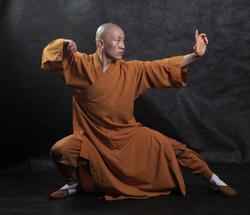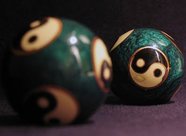The founding mechanic of Chi Kung! There are two things that we train to effect Jing, Chi, and Shen. These two things are Yi and Blood. In all of Traditional Chinese Medicine (TCM), Traditional Chinese Martial Arts (TCMA), and Chi Kung these two are what we work with to effect Jing and Shen. Chi as we noted above is the intermediary, and you’ll see in a little bit why the description of Jing Chi and Shen was an important precursor to this post. If you haven’t read my previous post: Chi Kung: The art of using Jing, Chi, and Shen I’d say stop here, read that one and come back. Alright, that being said, let’s get to it. In TCM we have a saying, “Yi moves the Chi, Chi brings the blood” This is the crux of all our training, seeking to establish a seamless connection between Yi, Chi and blood, which is guided by Jing, Ying + Yuan Chi, and Shen. There are various avenues to do this which vary system to system, but for the sake of simplicity I’ll stick to broad examples across different mediums. We’ll touch on how this simple, yet quite complex, principle applies to massage, acupuncture, and how we train them in hard + soft Chi Kung, that also translates into internal and external training of Kung Fu. YiA simple translation of Yi is intention, but more correctly it is the will of the heart + mind acting together. This mechanic is described in my blog heading, “intention rises from the unity of body and mind.” The ability to use Yi is reliant on having the body and mind function harmoniously. At the simplest level this means not contradicting your thoughts with your actions, and vice versa. To unify the heart + mind, or body + mind we must first unify our thought/understanding with our actions. In other words align our feelings with our will, our actions with our purpose. This is the requirement of using Yi to accomplish anything. The various martial arts and forms of training are focused on this end goal. The workings and principles of various systems are to help you accomplish these attributes on the physical level of martial/healing application. This alignment and balance of our action is what opens the door to use our Shen to support our actions. To rephrase our founding principle it is better said… Shen directs the Yi, that effects the Chi, which brings the blood, that allows the Jing to be stored instead of used. To rephrase our foundational principle it is better said… Shen directs the Yi that effects the Chi which brings the blood that allows the Jing to be stored instead of used. The storing of Jing is done by the efficient use of our Ying and Yuan Chi. Efficient use of Ying Chi is simply using Yi to make the right lifestyle and emotional decisions. This is comprised of mainly two parts, diet and lifestyle habits. Diet through TCM is mainly used as a tool to balance your mental faculty and your organs’ work load. If your diet is not balanced properly this will result in your internal organs having to work extra hard to perform their duties, and in turn this will snowball into your entire system not functioning well. The working of Yi in regards to diet is simply to choose the right things to eat, in the right quantity, at the right time. The bottom line is that you cannot have a healthy body fueled with a mismatched assortment of garbage. The working of Yi in regards to lifestyle habits is about aligning our body structure and mind to the use of our spirit. In Chi Kung, massage and acupuncture this means using Yi to align+ effect our body structure to facilitate or hinder the flow of Chi based on its efficiency at the time. If things aren’t moving well push them through in some areas, slow things down in others, etc.  In regards to soft/internal, hard/external TCMA this use of Yi is generally looked at through two avenues. From the outside in (hard/external), and inside out (soft/internal). Hard versions focus on using Yi, to hold alignments effecting Chi, to bring tension in the right way, at the right time, to push the blood through the channels and accomplish results. Soft versions focus on using Yi, to move alignments which effect Chi, to minimize tension moving more efficiently to facilitate blood flow and accomplish results. Ultimately both arrive at the same destination but by two different paths. A sort of Yin (internal), Yang (external) approach to training. Blood Dependent on the use of Yi, through Chi, Blood is affected. Weather this effect has a good or negative impact on Jing is reliant on how balanced the approach is. Not balanced simply in the way of some grand Yin, Yang, or any other TCM mechanism, but rather balanced in the way of YOU! How your personal state is stacked up in Yin, Yang, or the 5 phases of change. This is what dictates the effect on your long term health. In closing, your health is directly linked to the strength of your Spirit and your ability to discipline your intention to have a positive effect on your lifestyle, diet, and exercise. This is the founding mechanic of all Chi Kung, TCM, and TCMA.
1 Comment
|
Your AuthorDaniel R. Hyde
Licensed Massage Therapist OIF, OEF Veteran U.S. Marine Corps Instructor of: Kwan Ying Do Kung Fu Tai Chi Chuan Chi Kung Tui Na, Chinese Massage Thai Massage Shiatsu, Japanese Massage Archives
May 2021
Categories |



 RSS Feed
RSS Feed
